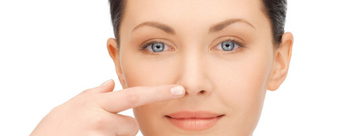Post Date: 7/26/2024

If you're unhappy with the wrinkles on your face that come with aging, you're probably interested in botox and dermal filler treatments. In our article, you'll learn the difference between them.
As you age, your body undergoes various changes. These changes occur in different parts of your body, and not all of them affect your appearance to the same degree. You don't have to love the wrinkles and fine lines that appear on your face as you age. Plastic surgery is an option to get rid of these wrinkles. However, it is both invasive and more expensive compared to botox and dermal filler treatments. You can schedule an appointment with Prof. Dr. Selçuk İnanlı to explore the nature of botox and filler applications more closely.
Before moving on to the comparison between botox and fillers, let's answer the question, "What is Botox?". Botox, or botulinum toxin, is a neurotoxic protein used in small doses to reduce the appearance of wrinkles by temporarily halting the function of your muscles. It is commonly used to treat wrinkles caused by repetitive facial movements such as frowning, squinting, or smiling. You can also opt for botox for forehead lines and crow's feet.
On the other hand, affordable botox treatments are widely available today and offer a non-invasive option for achieving a younger appearance. The procedure involves injecting small amounts of botox into the targeted muscles, resulting in smoother skin and fewer wrinkles. The effects usually last three to six months, after which the treatment can be repeated.
Dermal fillers are injectable substances used to smooth lines and enhance facial contours. Unlike botox, which affects muscle activity, dermal fillers work by adding volume to the skin. Common areas treated with dermal fillers include the lips, cheeks, and nasolabial folds. Dermal filler injections provide immediate results that can last from six months to two years, depending on the type of filler used.
Natural-looking dermal fillers are designed to mimic natural substances found in the skin, such as hyaluronic acid. With these dermal fillers, you can plump up thin lips, add volume to your cheeks, and fill in deep lines and wrinkles. They can significantly improve the overall appearance of your face without the need for surgical procedures.
Botox and dermal fillers serve different purposes and work in distinct ways. botox primarily aims to reduce the appearance of dynamic wrinkles by relaxing the muscles. It is effective for treating forehead lines, frown lines, and crow's feet. On the other hand, dermal fillers are used to add volume and fullness to areas that have lost their youthful plumpness due to aging.
When comparing botox and dermal fillers, it is essential to consider your personal aesthetic goals and needs. Botox is ideal for treating fine lines and wrinkles caused by facial expressions, while dermal fillers are better suited for restoring lost volume and enhancing facial contours. In some cases, combined botox and dermal filler treatments can be used to achieve comprehensive facial rejuvenation.
Deciding whether to have Botox or dermal fillers depends on the areas you want to treat and the results you are seeking. Botox provides excellent results for dynamic wrinkles on the forehead, between the eyebrows, and around the eyes. If you notice these lines becoming more pronounced, Botox can help relax the muscles and smooth the skin.
Meanwhile, dermal fillers are ideal for areas that have lost volume and elasticity, such as the cheeks, lips, and under-eye area. If you want to plump up your lips or add volume to your cheeks, dermal fillers for lips and cheeks are the preferred options. You can also opt for dermal fillers to fill in deep wrinkles and folds, achieving a more youthful appearance.
Both botox and dermal fillers are generally considered safe when administered by qualified health professionals. However, like any cosmetic treatment, there are potential risks and side effects. Safe botox procedures are usually completed with minimal discomfort and downtime, though some cases may experience bruising, swelling, or temporary muscle weakness.
Dermal fillers also carry risks, including bruising, swelling, and infection at the injection site. In rare cases, fillers can cause lumps or irregularities under the skin. It is crucial to choose the best botox and dermal filler clinics with experienced professionals to minimize these risks and achieve the best possible botox and dermal fillers results. The most common side effects and risks include:
In conclusion, both botox and dermal filler procedures are excellent options for non-surgical facial rejuvenation, each offering unique benefits. Whether you want to reduce wrinkles with botox or enhance your facial features with dermal fillers, understanding the differences between these treatments will help you make an informed decision. By consulting with Prof. Dr. Selçuk İnanlı, you can evaluate your aesthetic goals and begin planning your treatment. Please reach us using our contact information to reach out. Thus, you can also learn the dermal fillers and botox treatment cost.